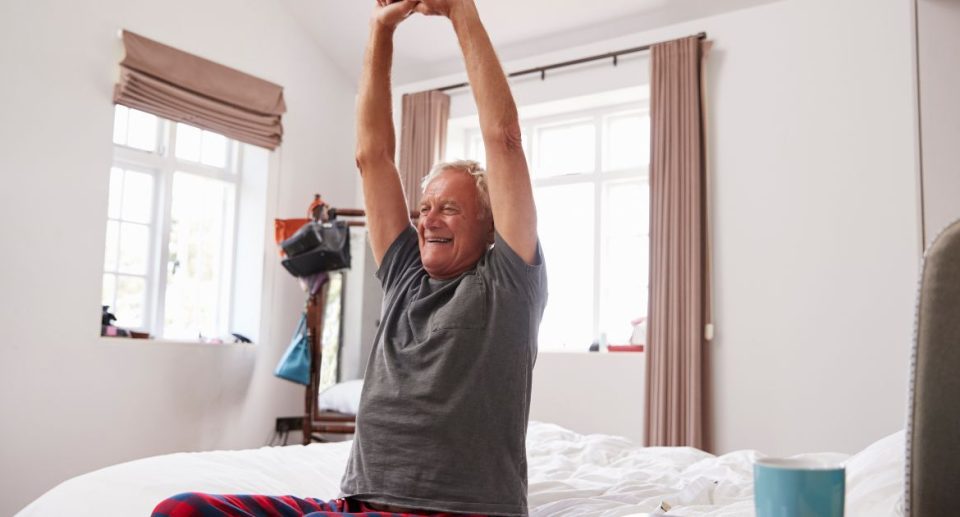How Can Seniors Adapt Their Homes for Aging in Place?

As we grow older, the idea of maintaining independence and familiarity in our own homes becomes increasingly appealing. Aging in place refers to the ability to live safely and comfortably in one’s own home and community, regardless of age or ability level. This concept has gained significant traction in recent years, as more seniors prioritize retaining their autonomy and avoiding the upheaval of moving to an assisted living facility or nursing home.
The benefits of aging in place are numerous. Firstly, it allows individuals to preserve their sense of identity and connection to their cherished memories and belongings within the comfort of their own homes. Secondly, it promotes a greater sense of independence and control over one’s daily routine and lifestyle choices. Additionally, remaining in a familiar environment can reduce stress and anxiety, which often accompany major life transitions.
As the population continues to age and life expectancies increase, the demand for aging-in-place solutions has skyrocketed. Seniors are increasingly seeking ways to modify their homes to accommodate their changing needs, enabling them to age gracefully and safely in the place they know and love.
Bathroom Modifications

One of the most crucial areas to address when adapting your home for aging in place is the bathroom. This space can pose numerous challenges as mobility and balance become more difficult. Fortunately, several modifications can enhance safety and accessibility in the bathroom.
Walk-in tubs are an excellent investment for seniors. These tubs feature a low threshold and a door that allows for easy entry and exit, eliminating the need to step over a high tub wall. Many walk-in tubs also include built-in seating and handrails for added comfort and security.
Grab bars are another essential addition to the bathroom. Strategically placed grab bars near the toilet, shower, and bathtub can provide crucial support and stability, reducing the risk of falls. These bars should be securely installed into the wall studs to ensure they can withstand significant weight.
Raised toilet seats can make it easier for seniors to sit down and stand up from the toilet. These elevated seats can be purchased separately or integrated into a new toilet installation. Additionally, consider installing a toilet with a higher seat height for added comfort and accessibility.
Non-slip flooring is crucial in the bathroom, where moisture and water can create hazardous conditions. Opt for textured or slip-resistant tiles, vinyl, or rubber flooring to minimize the risk of falls. You may also want to consider installing non-slip mats or applying non-slip treatments to existing floors.
Kitchen Adaptations

As we age, simple tasks like cooking and retrieving items from cabinets can become increasingly challenging. Adapting the kitchen to accommodate physical limitations is crucial for maintaining independence and safety. One key modification is lowering countertops to a comfortable height, reducing strain on the back, and making food preparation more accessible. Installing pull-out shelves in cabinets and pantries can also eliminate the need for excessive bending or reaching, ensuring essential items are within easy reach.
Selecting appliances with user-friendly features is another important consideration. Ovens with side-hinged doors, front-mounted controls, and easy-to-read displays can significantly enhance accessibility. Refrigerators with bottom-mounted freezers and water dispensers at an appropriate height can also make a world of difference. Additionally, installing task lighting under cabinets and over work surfaces can improve visibility and reduce the risk of accidents.
By making thoughtful modifications in the kitchen, seniors can maintain their independence, reduce the risk of falls or injuries, and enjoy the simple pleasures of cooking and dining in the comfort of their own homes.
Improving Mobility and Accessibility

One of the primary concerns for seniors aging in place is ensuring safe and convenient mobility throughout their homes. Addressing potential barriers and implementing accessibility features can significantly enhance independence and reduce the risk of falls or injuries.
- Ramps: Installing ramps at entry points or over raised thresholds can provide a smooth transition for those using walkers, wheelchairs, or scooters. Ramps should be sturdy, non-slip, and meet the recommended slope and width requirements for safe navigation.
- Stair Lifts: For homes with multiple levels, stair lifts can be a game-changer. These motorized chairs glide along a track installed on the staircase, allowing seniors to easily travel between floors without the strain or risk of climbing stairs.
- Wheelchair-Friendly Doorways: Widening doorways and removing raised thresholds can ensure wheelchair users can move freely throughout the home. A minimum width of 32 inches is recommended for doorways, with wider openings accommodating larger mobility aids.
- Handrails: Installing sturdy handrails along staircases, hallways, and bathrooms can provide essential support and stability. Handrails should be securely mounted and positioned at the appropriate height for easy grasping.
Lighting and Visibility Enhancements

Proper lighting and visibility are crucial for seniors aging in place, as vision often deteriorates with age. Bright lighting throughout the home can help prevent falls and accidents, while also making everyday tasks easier and more comfortable.
Consider installing additional overhead lighting or lamps in areas where you spend a lot of time, such as the living room, kitchen, and bedroom. Look for energy-efficient LED bulbs that provide ample illumination without excessive heat or energy consumption.
Night lights can be a game-changer for seniors, especially when navigating the home during the evening or overnight hours. Install these in hallways, bathrooms, and other high-traffic areas to ensure a well-lit path at all times.
Contrasting colors can also improve visibility and make it easier to distinguish between different surfaces and objects. For example, use contrasting colors for countertops and floors or paint door frames and baseboards a color that stands out from the walls. This can help prevent trips and falls and make it easier to locate items around the home.
Additionally, consider installing motion-sensor lights in areas like the entryway, hallways, and stairwells. These lights will automatically turn on when you enter the space, providing immediate visibility and reducing the risk of accidents.
Smart Home Technology and Monitoring

As we age, embracing technology can significantly enhance safety, independence, and peace of mind while aging in place. Smart home systems and monitoring devices offer a range of solutions tailored to the needs of seniors.
One of the most valuable technologies is automated systems that control lighting, temperature, and appliances through voice commands or smartphone apps. These systems not only provide convenience but also aid in energy efficiency and reduce the risk of accidents caused by forgetting to turn off appliances or lights.
Wearable devices, such as medical alert pendants or smartwatches, have become increasingly popular for seniors. These devices can detect falls, monitor vital signs, and provide immediate access to emergency services if needed. Some wearables even offer GPS tracking, allowing loved ones to locate the wearer if they become disoriented or lost.
Emergency alert systems have been a staple in senior care for decades, but modern versions offer advanced features like two-way voice communication, automatic fall detection, and seamless integration with smart home systems. These systems provide peace of mind knowing that help is just a button press away, whether it’s a medical emergency or a need for assistance with daily tasks.
Additionally, smart home monitoring systems can use motion sensors, cameras, and other devices to track activity levels and detect potential issues. Caregivers or family members can receive alerts if there are deviations from normal routines, such as prolonged inactivity or missed medication reminders, allowing for timely intervention and support.
By embracing smart home technology and monitoring solutions, seniors can maintain their independence while providing loved ones with the assurance that their safety and well-being are being monitored, creating a comfortable and secure environment for aging in place.
Exterior and Outdoor Modifications

Ensuring safe access to and from your home is crucial for aging in place. Outdoor modifications can help prevent falls and accidents while allowing you to enjoy fresh air and gardening activities.
- Ramps and Handrails: If your home has steps leading to the entrance, consider installing a ramp for easy wheelchair or walker access. Handrails along the ramp and steps can provide additional support and stability.
- Non-Slip Surfaces: Walkways, patios, and decks should have non-slip surfaces to reduce the risk of falls. Textured concrete, anti-slip paints, or specialized outdoor flooring can improve traction and safety.
- Safe Gardening Areas: Gardening can be a therapeutic and enjoyable activity for seniors. Create raised garden beds or container gardens to eliminate the need for bending or kneeling. Ensure paths and seating areas are level and accessible.
- Lighting: Proper lighting is essential for safe navigation outside your home. Install motion-sensor lights along walkways and entrances to illuminate potential hazards and ensure visibility at night.
- Outdoor Seating: Comfortable and sturdy seating areas in your yard or patio can encourage outdoor relaxation and socialization. Consider benches or chairs with armrests for easier sitting and standing.
Embracing Independence and Comfort
Adapting your home for aging in place is an investment in your well-being and autonomy. By making thoughtful modifications, you can create a safe, comfortable, and accessible environment that allows you to maintain your independence and quality of life as you age. While the process may require some planning and effort, the rewards of remaining in the familiar surroundings of your cherished home are invaluable.
Throughout this guide, we’ve explored various strategies to enhance your home’s functionality, from bathroom and kitchen modifications to improving mobility, and lighting, and incorporating smart technology. By addressing these areas proactively, you can minimize the risks of falls, accidents, and other age-related challenges, while also promoting your overall sense of security and confidence.
It’s essential to involve your family members or trusted advisors in the planning process, as they can provide valuable insights and support. Additionally, explore available financing options and resources to make the necessary adaptations more accessible and affordable.
Ultimately, aging in place is about embracing your independence and creating a comfortable, supportive environment that meets your evolving needs. By taking proactive steps today, you can enjoy the peace of mind that comes with knowing your home is equipped to accommodate your changing circumstances, allowing you to age gracefully and on your terms.





